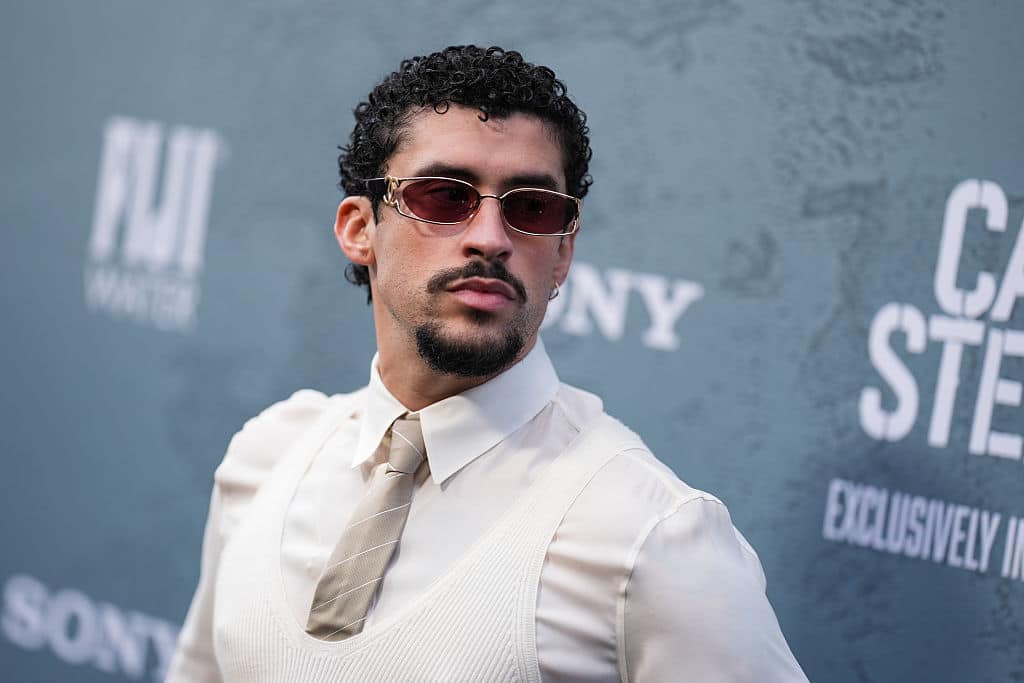Yale University
Source: John Nacion / Getty
Bad Bunny’s influence has left a permanent imprint on popular culture. Now, Yale University has decided his impact is important enough to study indefinitely.
As per Newsweek, the prestigious Ivy League institution will continue offering its course dedicated to analyzing the Puerto Rican superstar’s career. Originally launched in April, “Bad Bunny: Musical Aesthetics and Politics” breaks down how the “MONACO” artist not only commands global fandom but also embeds political, cultural, and social commentary throughout his music. Topics explored include Puerto Rico’s threatened cultural identity post–Hurricane María and ways Bad Bunny has corrected mainstream misconceptions about the reggaeton genre.
The class’ popularity took Professor Albert Laguna by surprise — over 120 students attempted to enroll. Still, he intentionally kept the course small to maintain meaningful discussion. “I prefer small classes to develop the conversation, the connection between the students,” he told El Nuevo Día. Laguna also confirmed he plans to keep teaching the course as long as Bad Bunny remains relevant.
The timing is notable. Since being announced as the Super Bowl LX halftime performer, Bad Bunny has faced loud criticism from detractors who claim he’s unworthy of the spotlight. A petition opposing the NFL’s decision has already surpassed 100,000 signatures.
HipHopWired Featured Video
Source: Monica Schipper / Getty
The Ivy League is recognizing Bad Bunny’s greatness. Yale University has announced they will be offering a course about the singer’s cultural impact.
As spotted on Hypebeast, the New Haven, Conn.-based school will be kicking off a course dedicated to Bad Bunny’s indelible influence on the world. Titled “Bad Bunny: Musical Aesthetics and Politics,” the class details how his music has not only shaped the Puerto Rican diaspora but helped put a spotlight on his island’s rich history. Albert Laguna, Associate Professor of American Studies and Ethnicity, Race & Migration, says that Bad Bunny’s latest project DeBÍ TiRAR MáS FOToS inspired the course. In an exclusive interview with The Yale Daily News he explained how the idea came to life. “I was walking around New Orleans, caught up in the Caribbeanness of the city, just listening to the album over and over again,” Laguna said. “I was taken by how every song opens up avenues of exploration in relation to topics that are important to me.”
The professor went on to further detail the the importance of the curriculum. “Of equal importance will be our engagement with how musical genres and aesthetic choices manifest these histories and challenges as well,” Laguna said. “You can ‘hear’ what the mass migration of Puerto Ricans made possible. Reggaeton in Puerto Rico cannot be divorced from musical flows in the region inseparable from colonial projects in the Americas, and locally, the politics of policing on the island. The class will be attuned to these histories and their sonic manifestations.”
Released Jan. 5, DeBÍ TiRAR MáS FOToS served as Bad Bunny’s personal love letter to his home town. The effort blended different elements of the island’s diverse music while his lyrics explored a wide array of the problems Puerto Rico faces including gentrification, political corruption and a fading cultural identity. DeBÍ TiRAR MáS FOToS has gone one to be recognized by fans and critics alike as his magnum opus. It has since gone on to sell over a million records in several countries.
HipHopWired Featured Video
Source: Chynna Keys / Getty
Lupe Fiasco is continuing his journey in higher academia. He announced that he will be taking part in a fellowship at Yale University.
The Drill Music In Zion rapper broke the news to fans last Thursday (March 30) through his Twitter account. “Proud to announce I’ve been chosen to be a Saybrook Fellow at my OTHER favorite school in the whole wide world outside of MIT…@Yale,” Lupe Fiasco wrote. “Shout [out] to Tom Near for nominating me to a place where against all odds two Chicagoans found a home in the Ivy League.”
Tom Near is Saybrook’s Head of College in addition to being a Professor and the Chair of Ecology and Evolutionary Biology at Yale, and Bingham Oceanographic Curator of Ichthyology at the Peabody Museum of Natural History.
The Saybrook College Research Fellowship at Yale was created to enable students and fellows to discuss and examine topics in informal spaces. “The Fellowship is intended also to provide students and Fellows with opportunities for discussion in an atmosphere less formal than the classroom,” their website states. “They represent a considerable potential for informal discussions of your interests, academic or otherwise, but you must seek them out and make your interests known. You will find that they are eager to meet you.”
This will be the second Ivy League teaching stint for the Chicago native, who recently completed teaching a course at the Massachusetts Institute of Technology (MIT) entitled “Rap Theory & Practice: An Introduction.” “[T]he MIT relationship was formally initiated through someone who had a connection to one of the professors at MIT, Dr. Nick Montfort. I mentioned my interest in studying computational poets and trying to look for somebody who worked in that space,” Lupe said in an interview last year.
He continued: “The connection was made, and all of a sudden, I was at MIT. At first, it was, ‘Come for a day.’ Then ‘Come see the school, get a tour.’ Then to, ‘Come speak at a class.’ Then it’s, ‘Oh, yo, come be part of a research group.’ Then it’s, ‘Oh, come be an artist-in-residence.’ Then it’s, ‘Oh, come be MLK Visiting Scholar for a year.’ It was just incrementally building over time, so it’s a result of a five-year engagement.”
-
Pages

 State Champ Radio
State Champ Radio 



